- News
- Reviews
- Bikes
- Accessories
- Accessories - misc
- Computer mounts
- Bags
- Bar ends
- Bike bags & cases
- Bottle cages
- Bottles
- Cameras
- Car racks
- Child seats
- Computers
- Glasses
- GPS units
- Helmets
- Lights - front
- Lights - rear
- Lights - sets
- Locks
- Mirrors
- Mudguards
- Racks
- Pumps & CO2 inflators
- Puncture kits
- Reflectives
- Smart watches
- Stands and racks
- Trailers
- Clothing
- Components
- Bar tape & grips
- Bottom brackets
- Brake & gear cables
- Brake & STI levers
- Brake pads & spares
- Brakes
- Cassettes & freewheels
- Chains
- Chainsets & chainrings
- Derailleurs - front
- Derailleurs - rear
- Forks
- Gear levers & shifters
- Groupsets
- Handlebars & extensions
- Headsets
- Hubs
- Inner tubes
- Pedals
- Quick releases & skewers
- Saddles
- Seatposts
- Stems
- Wheels
- Tyres
- Health, fitness and nutrition
- Tools and workshop
- Miscellaneous
- Cross country mountain bikes
- Tubeless valves
- Buyers Guides
- Features
- Forum
- Recommends
- Podcast
£299.99
VERDICT:
Adds an extra dimension and increases comfort for indoor riding
Adds extra dimension to riding
Makes longer sessions more comfortable
Easy to adjust for different riders or preferences
Not great for max power efforts
Requires more space than a normal turbo setup
Longer Velcro straps would be good for some setups
Weight:
20,000g
Contact:
At road.cc every product is thoroughly tested for as long as it takes to get a proper insight into how well it works. Our reviewers are experienced cyclists that we trust to be objective. While we strive to ensure that opinions expressed are backed up by facts, reviews are by their nature an informed opinion, not a definitive verdict. We don't intentionally try to break anything (except locks) but we do try to look for weak points in any design. The overall score is not just an average of the other scores: it reflects both a product's function and value – with value determined by how a product compares with items of similar spec, quality, and price.
What the road.cc scores meanGood scores are more common than bad, because fortunately good products are more common than bad.
- Exceptional
- Excellent
- Very Good
- Good
- Quite good
- Average
- Not so good
- Poor
- Bad
- Appalling
The Lifeline Rocker Plate is a platform that's designed to add realism to indoor riding, allowing side to side movement through inflatable balls that can be adjusted for rider weight and preferences. While it might not totally mimic real riding, it does add an extra dimension and also makes longer spells in the saddle more comfortable.
The Rocker Plate is made from two wooden ply sheets, connected by four rubber damping blocks along the centre of the board, along with two inflatable balls that provide resistance. A maximum of 13 degrees of sideways movement is possible, which is sufficient for almost all riders and riding styles.
> Find your nearest dealer here
The Rocker Plate arrived fully connected, with the only part needing to be fitted being the two inflatable balls. It's these that provide the resistance and can be adjusted for different rider weights. A pump is provided, and it is very simple to do, using a similar valve to a football or rugby ball.
The pump provided is fine if you only plan to use the trainer yourself, but it does take a few minutes to fully inflate the balls. If you share the trainer with someone else and you're different bodyweights and need to adjust the pressure, I would suggest having a track pump with a suitable connector handy as it will vastly speed up the process.
There is no guideline for how much pressure is required, you simply place all your weight on the top plate and when the boards don't touch, that is the correct amount.
Also included is a small spirit level, to ensure that the balls give a level surface; while this might not sound important, if it isn't level, once you are on top with all your weight any small discrepancy will be multiplied and it will slant sideways.
Measuring 162.5cm in length and 90cm at its widest point, the plate will take up more space than a standard bike and trainer setup. One aspect that didn't even cross my mind before setting up is that it also requires a little extra height; it's just another 10cm, but if you are currently using a restricted space, as I do, then it's something to consider.
The setup is designed to fit almost all brands and styles of trainers, including major brands Tacx, Wahoo and Elite.
> Buyer’s Guide: 15 of the best turbo trainers
Velcro straps are provided to secure the trainer in place, and for the Tacx Neo2 that I use they proved fine for the rear, but on the front when using a riser block – which was needed to give a level setup – the straps were a little short. Five straps are provided in total, and I had only used two for the rear so I had a spare, so I simply joined two together and connected it up fine, but it would have been simpler with a longer Velcro strap.
On the rocker
In use, the Rocker Plate feels a little odd at first; it doesn't mimic riding outside, but the swing motion is very noticeable and adds another dimension to riding. It's more realistic than a stationary trainer on the ground.
To be honest, I struggled initially and wasn't able to match power numbers usually achieved. I had to adapt my riding style to suit and, while it might sound counterintuitive, had to prevent myself from rocking too much. Over a few weeks my power numbers did return to more normal levels, but I still haven't been able to reach those I normally see on climbs and in races online using platforms such as Zwift. To put that into perspective, it's only around 10-15 watts (4-6% of FTP) difference, but for those who race it could be significant.
> Everything you need to know to try racing in Zwift
I imagine the reduction in watts is down to the swing produced, and perhaps extra effort put in that isn't all transferred to the trainer, which is providing the numbers, though it could perhaps be more simply the different setup and not being accustomed to it.
I suspect the difference will reduce as I continue to adjust to the setup, but I think it will always be a struggle to match high-power sprint effort numbers, which may be an issue if you race.
I would also expect different riders to see a different outcome depending on riding style, and using a power meter rather than take the reading off a trainer could also make a difference.
Comfortable swing
The biggest improvement is the comfort that the Rocker Plate provides, with the swing that gives a more natural riding style. As you pedal you move sideways gently, and having the trainer move to accommodate this makes for a much more comfortable and enjoyable ride. If you spend a long time riding indoors I suspect this will be the largest benefit; it may even increase core muscle strength slightly as the body reacts to stay upright and stable.
The higher the effort, the less it feels like 'real life', with sprints in particular being hard to get accustomed to as the board moves in a way that feels different to sprinting outside.
As I said at the start, you can alter the pressure in the balls to adjust the feel of the setup; increasing the pressure will reduce the movement, which could be useful – especially when you begin riding with the plate.
Durability
The board is made from coated plywood that ensures water – or, more importantly, sweat – will not be absorbed into the wood. There are also a number of anti-slip sections glued on to the board, but a few small sections did start to peel off after a few uses. It doesn't affect the performance at all, but is a bit annoying considering the large outlay.
The wood itself has stood up fine after plenty of use and also lots of cleaning after each session, and I do not see any issues developing, assuming it's kept indoors and cleaned following rides. The setup also came with two spare inflatable balls, should any mishaps or punctures occur.
Sideways only, or fore and aft?
There are other similar options available, such as the Bespoke Rocker Plate R1 that Dave tested last year, which has a similar rrp (£295). Both the Lifeline and Bespoke only have sideways movement but there are other options that also offer fore/aft movement, including the Turborocks Realplate React at £449 and Saris with the MP1 Nfinity trainer platform, with an rrp of £999.99.
Conclusion
While the Lifeline Rocker Plate doesn't feel exactly like riding outdoors, it does add an extra element to indoor riding that many will welcome, especially if you ride indoors a lot. It takes a little while to get fully accustomed to the setup, and you might see an initial reduction in power numbers, but other benefits could outweigh this, including the extra comfort that the platform offers.
Verdict
Adds an extra dimension and increases comfort for indoor riding
road.cc test report
Make and model: LifeLine Rocker Plate
Size tested: n/a
Tell us what the product is for and who it's aimed at. What do the manufacturers say about it? How does that compare to your own feelings about it?
Lifeline says:
The Lifeline Rocker Plate adds an extra level of realism to your indoor training. Mount your trainer to the plate and begin your session. The 13-degree side to side rock simulates the balance of road riding.
Compatible with most market-leading trainers including and not exclusive to:
Lifeline TT-01 & TT-02, Tacx Neo, Tacx Flux, Tacx Booster, Tacx Satori, Wahoo Kickr, Wahoo Snap, Xplova Noza S, Elite Crono Fluid, Elite Turbo Muin, Elite Qubo Digital.
Mount your trainer and riser block to the rocker plate and secure down with the velcro straps provided.
The Lifeline Rocker Plate provides up to 13 degrees of 'rocking range' and adds an additional sense of reality to your indoor riding. The rocker plate requires the rider to maintain balance on the bike. It recreates the natural side to side movement you'd get whilst out on the roads. When you put the power down, rock with the bike and build your core strength. Indoor training doesn't have to be static.
An added benefit of the Rocker Plate is that it relieves some of the stress on the bike frame that is associated with long term static training.
Tell us some more about the technical aspects of the product?
Sizes:
162.5cm length
90cm at its widest point
28.5cm at its narrowest point
10cm height
Plywood with natural rubber sheet
Included in the box:
Ply Rocker Plate – upper and lower x 1
Rubber damping block x 5
M10 countersunk screws x 10
Velcro straps x 5
Inflatable balance balls x 3
Mini pump + needle x 1
Spirit level x 1
Rate the product for quality of construction:
7/10
Overall, well made, solid and strong.
Rate the product for performance:
7/10
Easy to adjust to different rider weight or preferences to attempt to mimic more natural riding style, and also does help in terms of comfort. The longest session I did on it was just over two hours, which is longer than I would normally spend on a trainer, and had no issues or discomfort.
Rate the product for durability:
7/10
Some anti-slip sections starting to come off, but the main aspect should last without significant deterioration.
Rate the product for comfort (if applicable)
8/10
The sideways action allows the body to move more naturally, giving a more comfortable riding position.
Rate the product for value:
6/10
It's roughly the same price as the similar Bespoke.
Tell us how the product performed overall when used for its designed purpose
It took some time to adjust and adapt, but after a number of weeks it felt good and more comfortable than riding without.
Tell us what you particularly liked about the product
Easy setup and adjustment possible.
Tell us what you particularly disliked about the product
The time it took to adjust to the change.
How does the price compare to that of similar products in the market, including ones recently tested on road.cc?
There are similar rocker plates available, with the two most prominent being the Bespoke Rocker Plate R1 at £295, which Dave tested last year, and the TurboRocks Realplate+ which starts at £275 for the Naked, although this isn't one that has been tested yet. Some offering fore-aft movement not just sideways cost more: the TurboRocks Realplate React is £449, the Saris MP1 Nfinity trainer platform has an rrp of £999.99.
Did you enjoy using the product? Eventually yes; initially, not so much.
Would you consider buying the product? Probably not.
Would you recommend the product to a friend? If they ride indoors frequently.
Use this box to explain your overall score
The overall construction is solid and well made with useful number of spares provided. It's very good.
About the tester
Age: 35
I usually ride: My best bike is: Cannondale SystemSix
I've been riding for: Over 20 years I ride: Every day I would class myself as: Expert
I regularly do the following types of riding: road racing, cyclo cross, sportives, mtb, Lots of gravel style riding
Matt is an endurance nut who loves big rides and big events. He's a former full-time racer and 24hr event specialist, but now is also happy riding off-road on gravel bikes or XC mountain bikes and exploring the mountains and hills of Mid Wales.
Latest Comments
- Hirsute 4 hours 58 min ago
And creating transgender mice. Transgender/ transgenic it's the same thing.
- Steve K 5 hours 28 min ago
There was a certain Conservative PM who was well known for cycling (and for investing in cycling infrastructure when Mayor of London)
- Hirsute 5 hours 51 min ago
More wands - drivers incapable of basic manoeuvres...
- Secret_squirrel 5 hours 58 min ago
What kind of morons build a bridge to nowhere?
- Sredlums 6 hours 14 min ago
Agreed, and to be clear, I don't expect everybody to be an expert in everything (I certainly am not). Ha, I worked at bike shops long enough to...
- hawkinspeter 7 hours 50 min ago
Opposition to controversial East Bristol Liveable Neighbourhood ‘will filter away’ say council bosses...
- quiff 9 hours 42 min ago
I know it's not the same, but they are saying Quest will have free highlights.
- chrisonabike 11 hours 4 min ago
Yeah but if you take away any chance of getting their licence back they'll turn into some kind of amoral road-bandit! * checks court records again ...
- mdavidford 11 hours 45 min ago
As far as I can see, the only place anything like that number appears in the source story is in the video, near the end, when they're chatting...
- David9694 12 hours 45 min ago
A338: Van flips over in crash on busy road https://www.bournemouthecho.co.uk/news/24981719.a338-van-flips-crash-bus... 40 mph zone








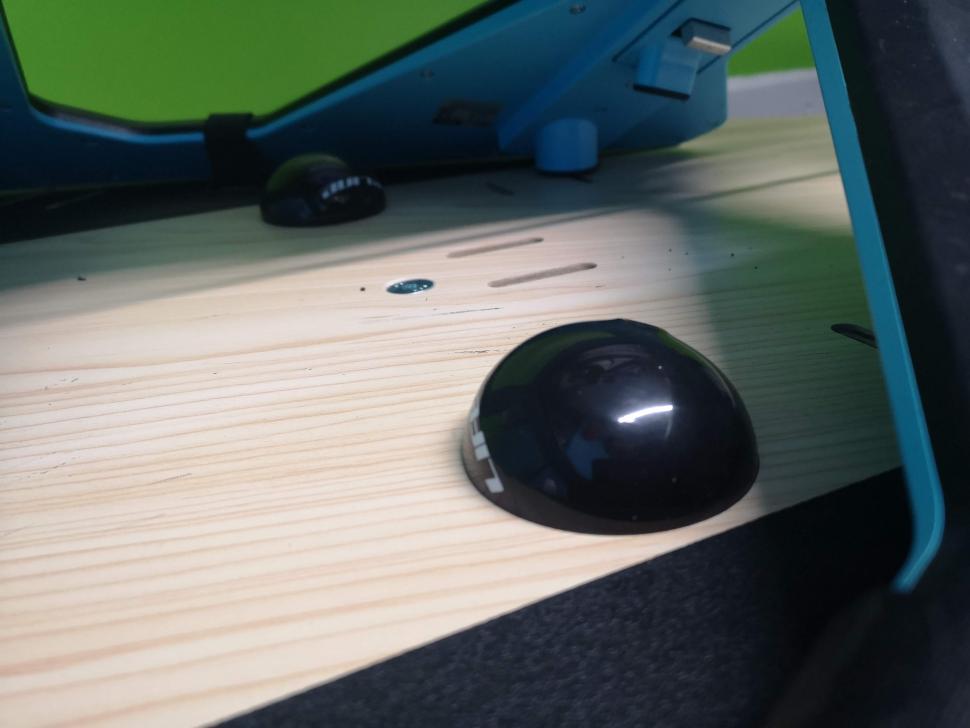

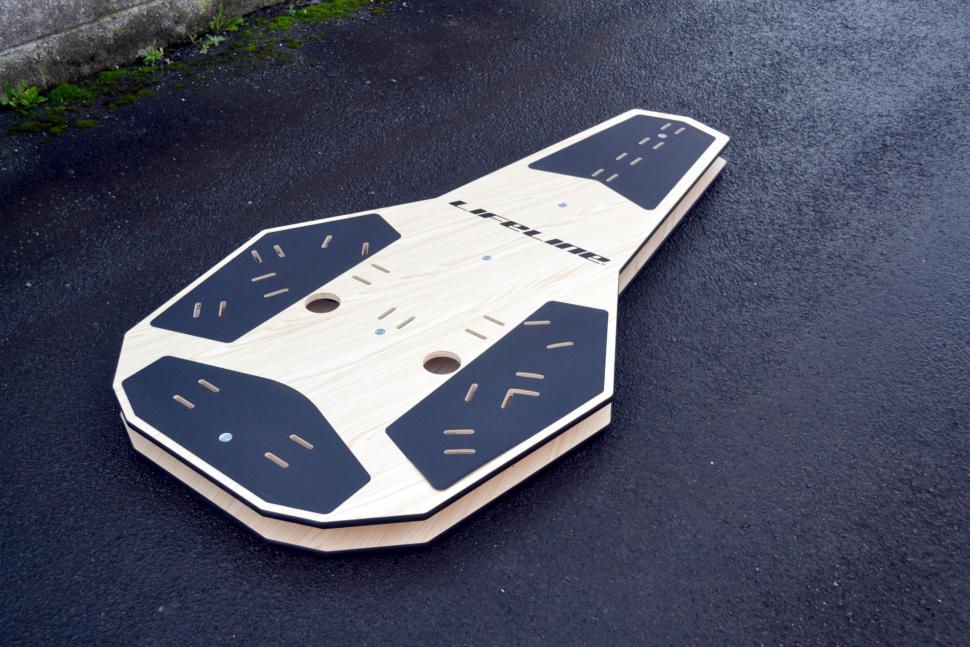
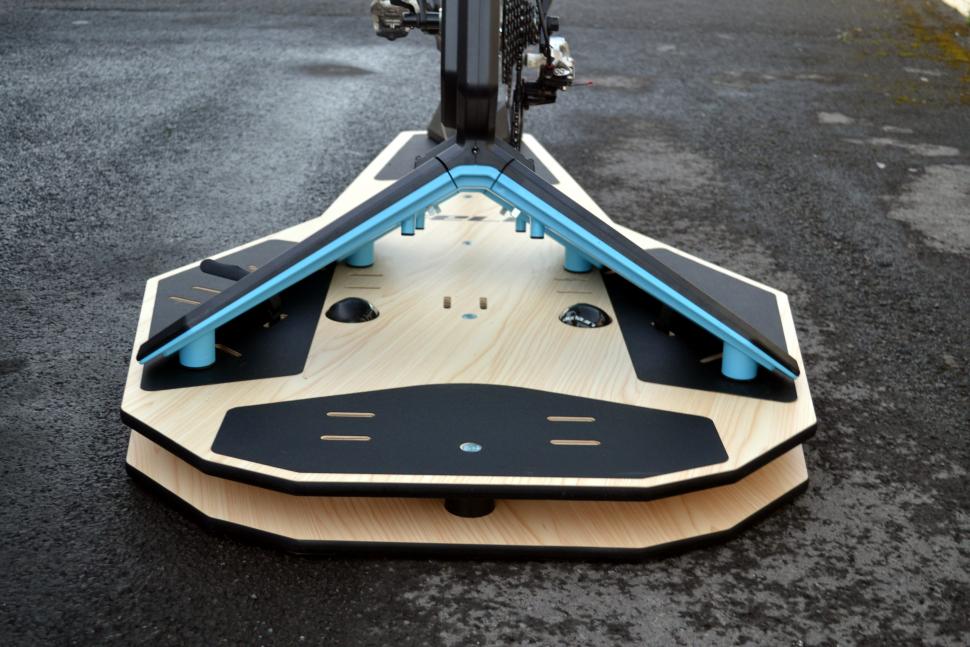

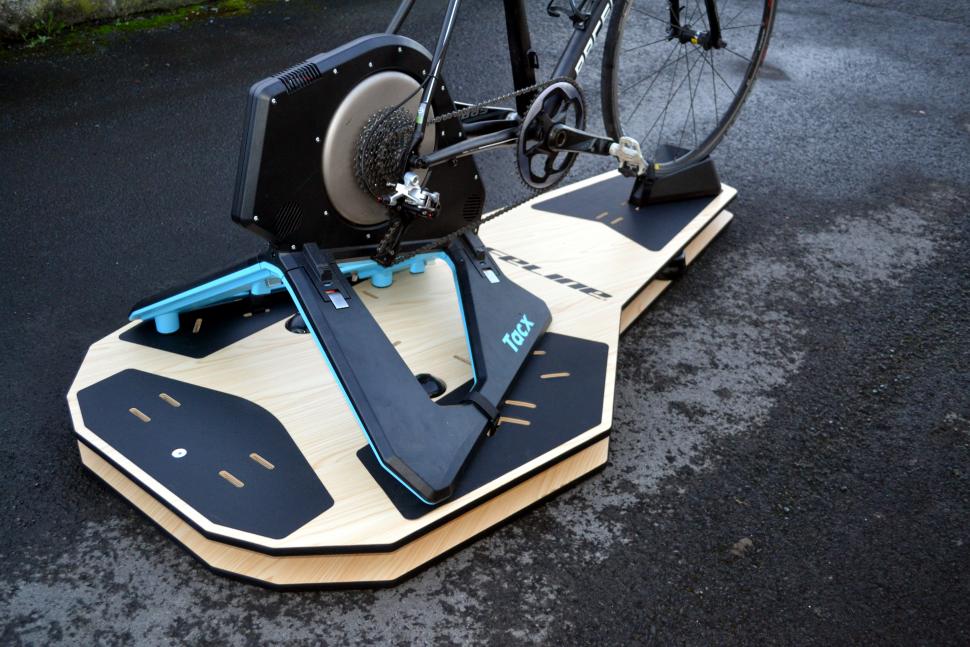
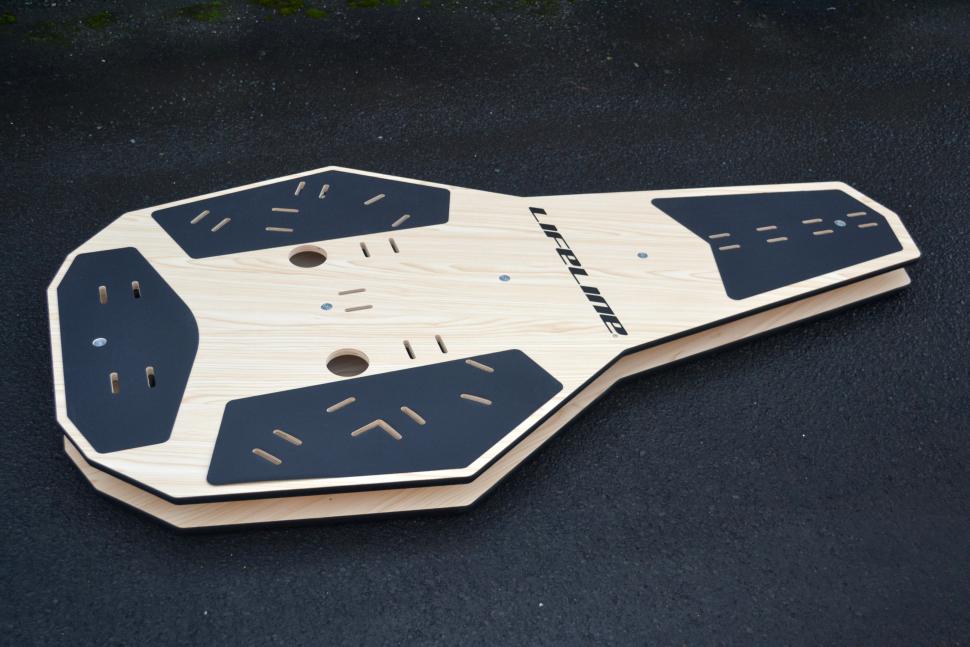
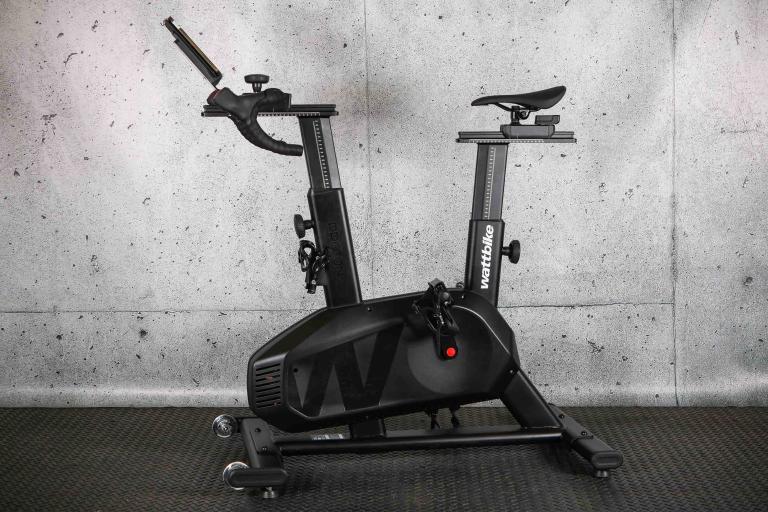
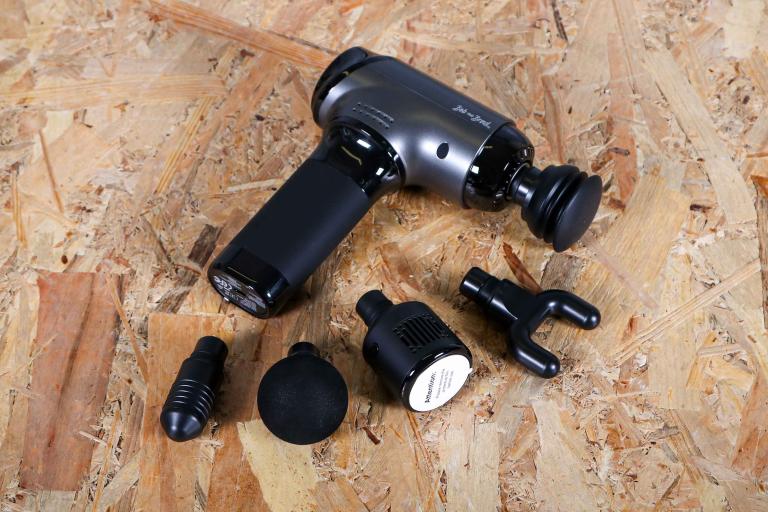
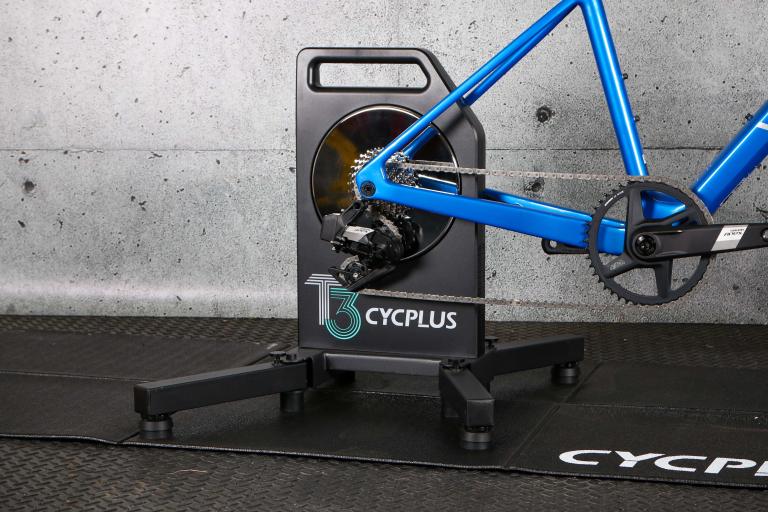
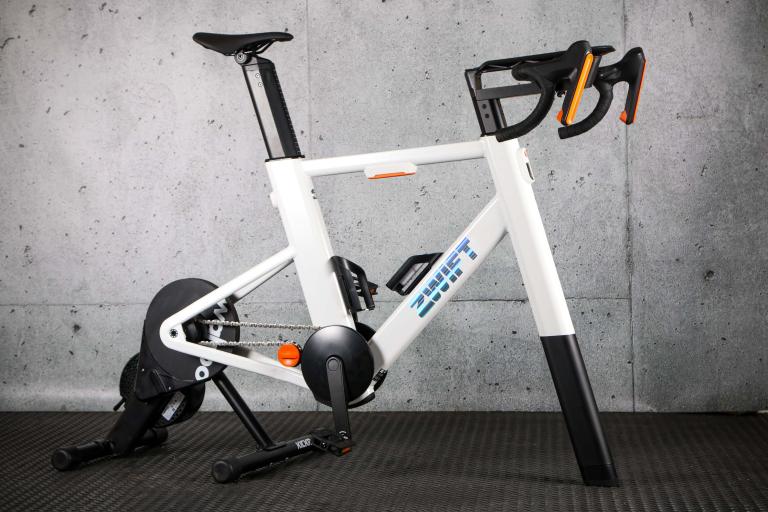
Add new comment
12 comments
I bought one of these back in July, I think it was the first batch they had delivered. I'm very happy with it and glad I bought it. Before I got it, riding indoors for more than 45-60 minutes started to get uncomfortable, I think I was spending too much time in a really fixed position, now two or more hours is fine (at least from a comfort point of view)
It took a couple of rides to get the action right, I found that by conciously pulling on the bars a little more than necessary I was able to get the plate to rock the correct way, more like it would out on the road, with the bike moving away from the extending leg, naturally the plate wants to move with you so in the direction of the down stroke, but a couple of rides in and it becomes second nature (especially if you don't over inflate the bumpers). Doing a few slow motion exagerated sprints helps get it into your head too, tipping the bike correctly so that by the time you do them properly you don't have to give it any thought.
I do wish the grip tape areas were a little larger, but I suppose buying some 3M or skateboard tape would be easy enough to add to it. But other than that, and the length of the velcro straps mentioned in the review, I have no complaints, it does the job perfectly, it also seems to help dampen noise through the floor quite a bit (it's set up upstairs)
I got it at less than the £300 RRP listed, around £240 I think it was, and for that price I can't argue, I'd thought about one of the more expensive ones, but for the abuse it's likely to get this has been great. Even if I owned a router and other tools needed to build one, I don't think I could have bought the parts much cheaper than this cost, and the time it would have taken me to build it would have made it far less worthwhile. Plus this has some nice additions like the rubber trim around the edges of both boardsthat I wouldn't have had the patience to add if I was building it for myself.
Got mine about a week ago and so far so good, I've got a Tacx Neo strapped on the back and the balls are inflated to about 10 psi although I have the right slightly down on the left as that levels it up more when I'm sat on it pedaling. The main reason I bought one was for comfort, I spend far too long on the trainer!
Theres a great Rocker Plate group on FB that gives you the lowdown on all of them, even has the plans to build your own if you are that way inclined and there's also a plan to make these do fore and aft. But I think if you're racing on Zwift then a rocker plate isnt for you.
I've had one of these for a couple months now (£225 in the sale!) and my experience is slightly different.
Maybe I have the balls pumped up too hard but I don't feel too much movement unless I conciously move to corner on it?. I have to get out of the saddle to really notice the movement but in normal use it does feel more natural with a slight movement to it.
I bought it as I was getting a bit of knee pain which I possibly wrongly blamed on the very static trainer (tacx vortex, which fits it fine) and it pretty much solved the problem...or maybe I just got used to the trainer again.
It's very heavy and solidly built, does look quality and you do get various spares with it including the pump/spare straps/spirit level/extra inflatable balls and so on.
I'm glad the review stated you lose power from this as it counteracts the alleged over reading by the vortex that everyone moans about!! (mine compared ok with my power meter pedals when I had them tbf). When sprinting I don't feel like it impedes me but then again, my trainer is basic and maybe I'll disagree when I'm on something better.
I would recommend it btw
My guess is yes! I've set mine up so that the balls feel slightly under-inflated (the plates don't touch) and the feeling when riding is every-so-slightly unstable which means it feels more realistic to me. That way it does move when I move and I don't need to consciously lean it.
thanks, I may well experiment a bit more!
Couldn't the need for faffing around with a spirit level have been avoided by just connecting the two reservoirs so that the pressure automatically evens out, and inflating them through a single valve?
Yup good call
I'm assuming to cut costs they just used parts that are out there already
No, it would result in the platform self setting a random level depending which side inflated easiest. Also by connecting the reservoirs the plate will rock more in use and feel quite unstable as air moves between the two sides.
Wouldn't that just mean it's more realistic though? I mean air pressure doesn't increase on one side of you and decrease on the other as you lean over in real life. And the level would reset as soon as you get on it, assuming you sit centred?
I am intrigued by these rocker plates, but cannot see how the ingredients add up to £300. The only technical part is sourcing the rubber bits and balls. Or am I missing something?
I'd agree that there's not 300 worth of stuff there, but by the same token the jersey that costs 100 doesn't have 100 worth of tech or R&D in it either and for me, I'm not technical-enough and don't have the relevant tools to make my own rocker (or jersey) so it's buy it or don't have one!
Mine arrived today, well-packaged and, despite having read reviews to the contrary on Wiggle's site, it was easy to set up. It is tryly MASSIVE, and a minor gripe for me is that my Tacx Flux S straps down securely at the front but the shape of the trainer at the rear means that there's nowhere to strap it down. Only one ride in so far but the trainer seems secure and as I don't really like sprinting indoors (the strain on the frame worries me) I don't anticipate any problems. It made my hour on Zwift this morning far more enjoyable as I wasn't crying and ready to get off at the end (slight, but only slight exaggeration).
When riding standing, the feeling is jerky as opposed to smooth but when sat down it feels natural and the slight movement underneath is noticeable but not in a negative way. I even found myself unwittingly leaning into corners slightly, just as I would on the road.
I suspect that a little tinkering with the trainer placement and the ball pressure will pay off over the next few rides and I plan to get back on later this afternoon having messed with the ball pressure a little to see what difference it makes.
So far not the silver bullet I'd hoped for but certainly much more comfortable than the usual agony.